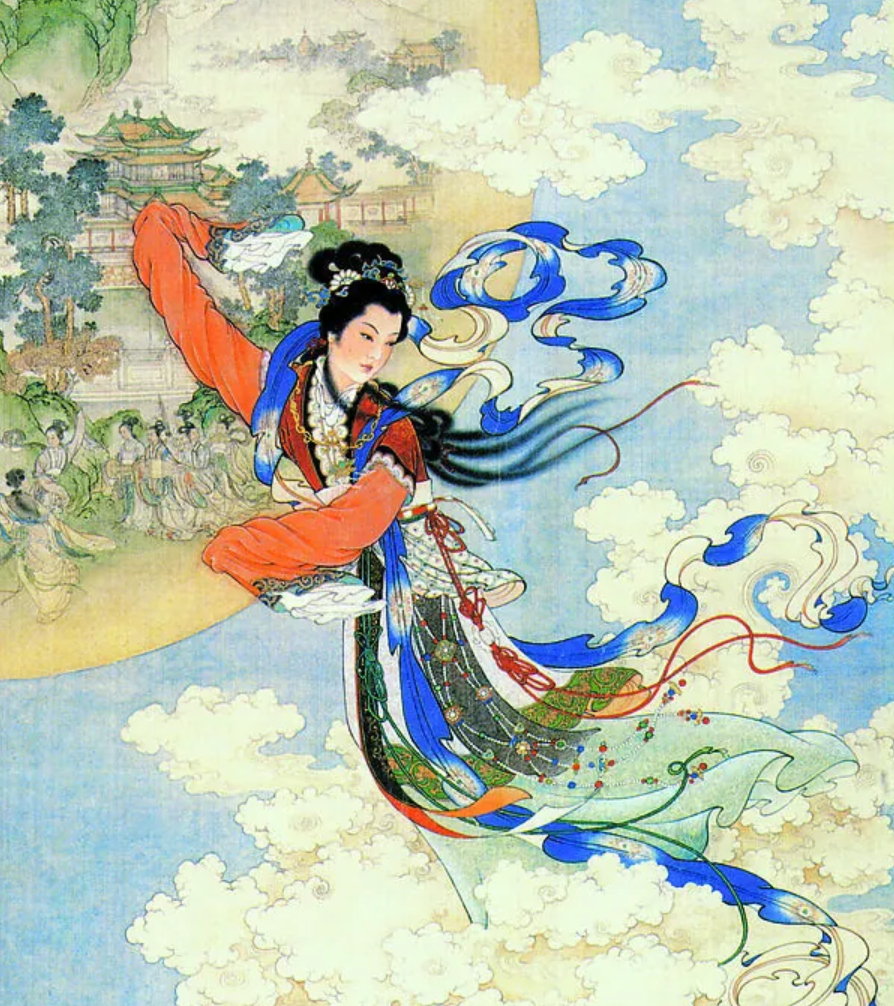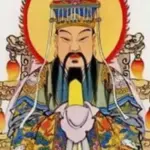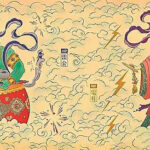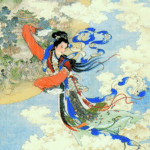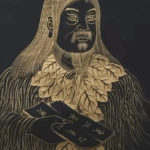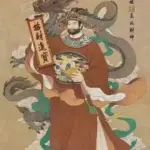Chang’e: The Evolution of a Lunar Deity in Chinese Mythology
Chang’e, a central figure in ancient Chinese mythology, is also known by names such as Heng’e, Hengwo, Henge, Chang’e, and Su’e. Traditionally depicted as the wife of the archer Yi, she ascended to the Moon Palace after secretly consuming an elixir of immortality. The earliest reference to her tale appears in the Shang dynasty divination text Guicang, while the most complete version of her flight to the moon is found in the Western Han compendium Huainanzi: Lanming Xun. By the Eastern Han period, the narrative solidified: Chang’e, after ingesting the elixir, not only left the mortal world but also transformed into a moon-dwelling toad. From the Northern and Southern Dynasties onward, however, her image reverted to that of a celestial beauty.
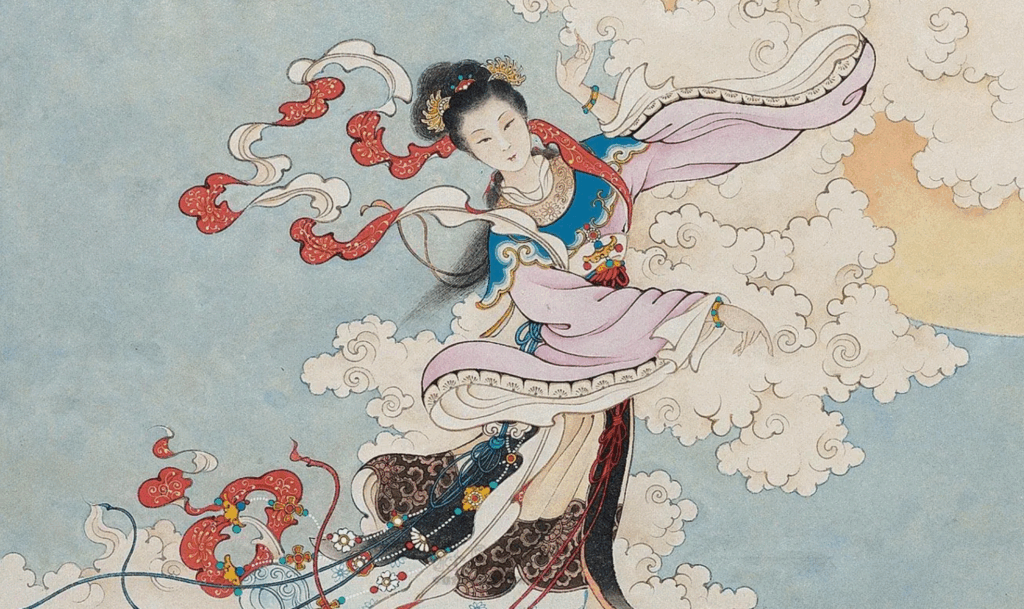
In Han dynasty stone engravings, Chang’e is portrayed with a human head and serpentine body, adorned in flowing robes and crowned with a high chignon. A long, feathered tail trails behind her, suggesting otherworldly grace. Later depictions emphasized her extraordinary beauty. Chen Shubao, the final emperor of the Chen dynasty, famously compared his beloved consort Zhang Lihua to Chang’e, while the Tang poet Bai Juyi likened a charming neighborhood girl to the moon goddess herself.
The original account of Chang’e’s lunar ascension appears in the now-lost Guicang, with only two bamboo-slip fragments surviving in the Qinjian Guimei. One excerpt reads: “Long ago, Hengwo stole the (fragment missing) of immortality and fled to the moon,” identifying Hengwo as Chang’e’s original name. Xiao Tong cited Guicang twice in his anthology Selections of Refined Literature, elaborating on the myth with passages such as: “Once, Chang’e consumed the Western Queen Mother’s elixir of immortality and soared to become a lunar spirit.”
The Classic of Mountains and Seas, compiled before the Qin dynasty, offers a mythological precursor to the tale, noting: “A woman bathes the moon; she is Changxi, consort of Di Jun, who gave birth to twelve moons.” Linguistically, “Xi,” “Yi,” and “E” were phonetically similar in ancient Chinese, leading the Qing scholar Bi Yuan to propose that Chang’e evolved from Changxi, interpreting the name as a folk transformation over time.
In Huainanzi: Lanming Xun, composed during the Western Han, the myth is enriched with the figure of Yi: “Yi acquired the elixir from the Queen Mother of the West, but Chang’e stole and consumed it, fleeing to the moon. Yi, grieved, could not replicate the elixir, for he lacked knowledge of its origin.” The Eastern Han text Lingxian depicts her metamorphosis into a toad: “Chang’e, having taken the elixir, sought an augury from the seer Youhuang before her journey. The oracle promised prosperity despite ominous signs. She ascended and became the Moon Toad.” In ancient Chinese belief, toads were sacred creatures associated with warding off evil and promoting longevity—fitting symbols for lunar deification.
By the end of the Eastern Han, scholar Gao You, in his commentary on Huainanzi, affirmed Chang’e as Yi’s wife: “Before Yi could take the elixir, Chang’e stole and consumed it. She became immortal and fled to the moon, transformed into the spirit of the moon itself.”
The embellishments by Zhang Heng and interpretive clarity from Gao You laid the foundation for the canonical structure of the Chang’e myth. Later retellings, including Gan Bao’s In Search of the Supernatural, largely adhered to this version. The philologist Xu Shen in Shuowen Jiezi defined “Heng” as a synonym for “Chang” (eternal), and due to a naming taboo for Emperor Liu Heng of the Han, “Heng’e” was eventually altered to “Chang’e.”
From the Northern and Southern Dynasties onward, Chang’e’s toad form gave way permanently to that of a celestial maiden. Yan Yanzhi of the Liu Song dynasty, in To the Cowherd from the Weaving Maiden, wrote: “The Weaver Star unites with the Celestial Maiden, while Chang’e rests on the flying moon,” firmly reestablishing her anthropomorphic form. Xie Zhuang’s Ode to the Moon referenced “the Jade Rabbit at the Emperor’s Terrace, and Su’e in the Inner Court,” while Xu Ling’s Preface to the New Songs of the Jade Terrace imagined her competing with the moon in radiant beauty. By this era, she was no longer a mystical beast but a resplendent lunar deity—the “Moon Maiden of Guanghan.”
During the Ming and Qing dynasties, with the rise of urban literature, Chang’e’s image became increasingly secularized. In Journey to the West, “Chang’e” became a generic title for the maidens of the moon palace, and the character harassed by Marshal Tianpeng was not the goddess herself but a celestial dancer. In Strange Tales from a Chinese Studio, she retained her divine origins but, having been banished to the mortal realm, shed much of her celestial gravitas.
Thus, over millennia, Chang’e transformed from an ancient lunar spirit into a complex symbol of immortality, beauty, and estrangement—forever suspended between myth and memory, celestial mystery and human longing.
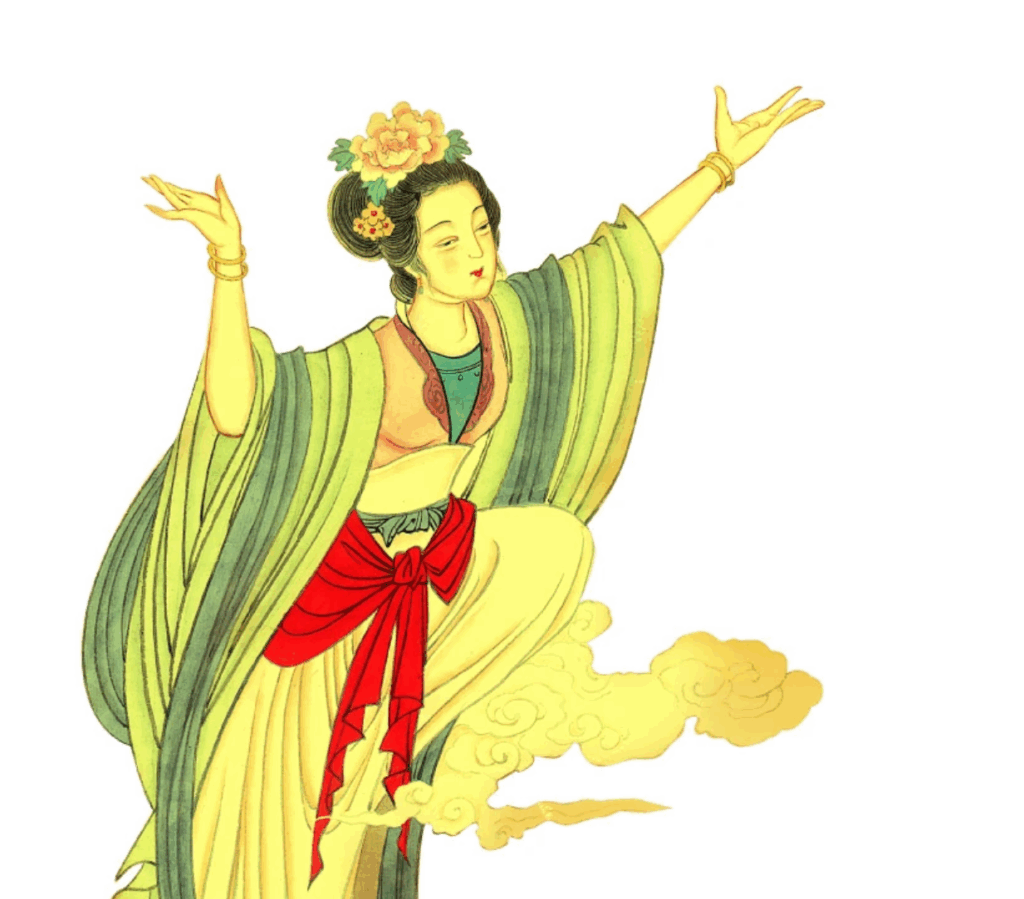
Mythology
Among the many legends surrounding Chang’e, she is most renowned for her flight to the moon after consuming the elixir of immortality. Though variations of the myth exist, the core narrative remains consistent: in some accounts, Chang’e is compelled to drink the potion to keep it from falling into the wrong hands—typically, her husband’s treacherous apprentice. In others, she is portrayed as a vain or selfish figure who consumes the elixir for personal gain. Regardless of the telling, Chang’e becomes immortal and escapes to the moon, where she remains alone.
One of the earliest mentions of Chang’e appears in the ancient Shang dynasty divination text Gui Cang (《歸藏》). It records: “In ancient times, Chang’e took the Western Queen Mother’s medicine of immortality and consumed it, thereafter fleeing to the moon, becoming its very essence.”
The Elixir of Immortality
In the primordial days of the earth, ten suns once blazed in the sky, scorching the land and plunging the world into unrelenting heat. Agriculture failed, and life teetered on the brink of extinction.
It was then that a heroic archer named Hou Yi (后羿) took aim at the heavens. With unmatched skill, he shot down nine of the ten suns, sparing humanity from destruction. As a reward for his valor, the celestial goddess Xiwangmu (西王母) bestowed upon him an elixir of immortality—a divine gift typically reserved for those who had achieved transcendence.
Grateful yet conflicted, Hou Yi chose not to drink the elixir. Since it was sufficient only for one person, he could not bear the thought of living eternally without his beloved wife. Instead, he concealed the vial beneath their bed, resolving to remain mortal by her side.
But Chang’e discovered the hidden treasure. That very night, overcome by desire—or destiny—she drank the elixir in its entirety. Realizing her absence, Hou Yi rushed outside, only to witness his wife rising toward the heavens, her silhouette dissolving into the moonlight.
In a fit of sorrow and rage, he nocked his bow and loosed arrows into the sky, but none reached her. Over time, his grief eclipsed his anger. Night after night, he gazed longingly at the moon, imagining her solitude. To ease her loneliness and show his forgiveness, he began placing her favorite fruits and desserts on an altar. Until his dying day, he honored her with these offerings—a tradition that endures during the Mid-Autumn Festival.
In alternate versions of the myth, Chang’e is punished for her transgression, transformed into a grotesque toad, and condemned to a solitary existence on the moon. Other retellings suggest she became addicted to the elixir, endlessly brewing and consuming it in the moon palace. In some interpretations, a compassionate white rabbit joins her, helping to prepare the elixir by pounding herbs into fine powder with its hind legs—a motif that continues to enchant storytellers.
Journey to the West
In Wu Cheng’en’s Journey to the West, Chang’e appears briefly in a tale of cosmic punishment. The pig demon Zhu Bajie (豬八戒), once the revered Marshal of the Heavenly Canopy, is banished to the mortal world for attempting to seduce Chang’e on a moonlit night. His disgraceful fall from grace underscores the moon goddess’s sanctity and the consequences of defying celestial order.
Cultural Legacy
The Mid-Autumn Festival, one of the most cherished holidays in the lunar calendar, is celebrated across East and Southeast Asia. Marking the autumn harvest, it is a time for reunion, reflection, and reverence. Families gather to share food, stories, and mooncakes—round pastries often adorned with imagery of Chang’e and her lunar rabbit.
During the festival, offerings of fruits and confections are placed on outdoor altars beneath the full moon in hopes of receiving Chang’e’s blessing. Her story, both melancholy and magical, imbues the occasion with poetic significance.
Chang’e’s myth has even transcended folklore to enter the annals of space exploration. When the Apollo 11 crew landed on the moon, flight controller Ronald Evans relayed the legend of Chang’e and her celestial companion. Michael Collins, ever the wit, replied that he would keep an eye out for the “bunny girl.”
In tribute to this enduring tale, China’s Lunar Exploration Program is aptly named the Chang’e Project (嫦娥工程). Managed by the China National Space Administration (CNSA), the initiative comprises a series of robotic missions aimed at exploring the moon’s surface and paving the way for future lunar research stations. In bridging myth and modernity, Chang’e continues her ascent—not just in legend, but in science.

